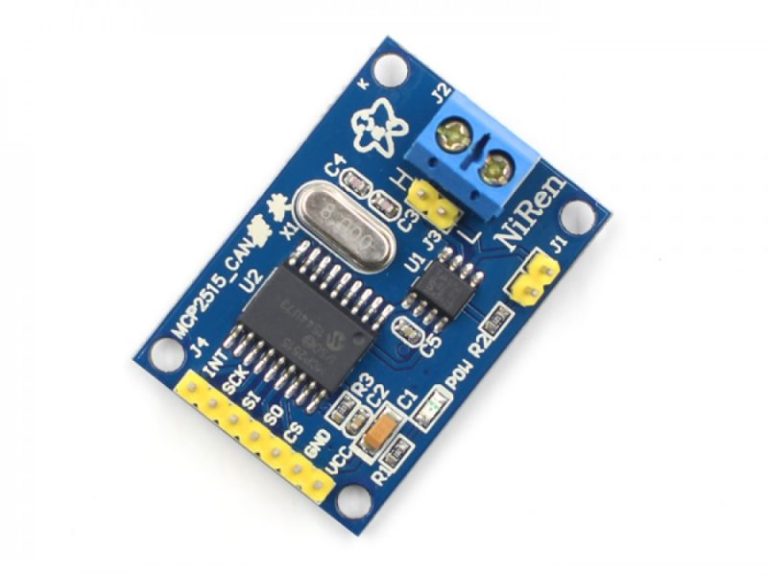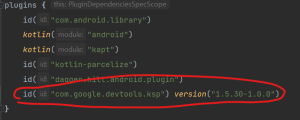If you’re a tech enthusiast or someone who’s interested in the world of embedded systems and communication protocols, then the MCP2515 is a device that you should definitely know about. MCP2515 is a standalone controller area network (CAN) controller that can be used to implement CAN communication protocols in a wide range of applications. In this blog, we’ll explore what MCP2515 is, what it does, and why it’s such an attractive choice for developers and engineers.
So, what exactly is MCP2515? At its core, the MCP2515 is a controller chip that is designed to work with the CAN protocol. CAN is a communication protocol that’s commonly used in automotive and industrial applications where reliable, high-speed communication between microcontrollers is required. The MCP2515 provides a way to interface with the CAN bus and handle communication between devices, making it an essential component for many embedded systems.
One of the key features of the MCP2515 is its ability to handle large amounts of data quickly and efficiently. With a maximum baud rate of 1 Mbps, it can transmit and receive messages at a high rate of speed, making it an ideal choice for applications that require real-time data transmission. Additionally, the MCP2515 is highly configurable, allowing developers to adjust a wide range of parameters to optimize performance for their specific application.
Another advantage of MCP2515 is its low power consumption. The device can operate at a wide range of voltages, from 2.7V to 5.5V, and it consumes only a small amount of power during operation. This makes it an attractive choice for battery-powered applications, where minimizing power consumption is essential.
One of the reasons why the MCP2515 is so popular among developers is the fact that it’s relatively easy to use. It can be interfaced with a microcontroller via a simple SPI interface, and there are many libraries available that make it easy to integrate into projects. Additionally, there are many resources available online, including datasheets, sample code, and tutorials, making it easy to get started with the MCP2515 even if you’re new to the world of embedded systems.
Overall, the MCP2515 is a powerful and versatile device that’s ideal for a wide range of applications. Its ability to handle large amounts of data quickly and efficiently, along with its low power consumption and ease of use, make it an attractive choice for developers and engineers working on embedded systems. Whether you’re working on an automotive application or an industrial control system, the MCP2515 is a device that you should definitely consider incorporating into your project.
The MCP2515 is a highly configurable device that allows developers to adjust many parameters to optimize its performance for their specific application. For example, the device can be configured to use either a 8MHz or 16MHz crystal oscillator, which affects the maximum CAN baud rate that can be achieved. The device also allows for different types of message filtering and buffering, which can help to reduce the load on the microcontroller and improve overall performance.
Another advantage of MCP2515 is its ability to handle both standard and extended CAN messages. Standard CAN messages are limited to 11-bit identifiers, while extended CAN messages can have identifiers up to 29 bits in length. This flexibility makes the MCP2515 suitable for a wide range of applications, from simple sensor networks to more complex control systems.
In addition to its technical capabilities, the MCP2515 is also a cost-effective solution for implementing CAN communication. The device is relatively inexpensive compared to other CAN controllers, making it an attractive choice for budget-conscious developers and engineers.
Finally, the MCP2515 is supported by a wide range of development tools and software. There are many libraries available for popular microcontrollers, including Arduino and Raspberry Pi, that make it easy to interface with the MCP2515. Additionally, there are many resources available online, including datasheets, application notes, and forums, where developers can get help and support for their projects.
Overall, the MCP2515 is a powerful and flexible device that’s ideal for implementing CAN communication in a wide range of applications. Its low cost, ease of use, and extensive documentation make it a popular choice among developers and engineers who are working on embedded systems. Whether you’re working on an automotive application, an industrial control system, or a simple sensor network, the MCP2515 is a device that you should definitely consider incorporating into your project.
Advantages:
- Highly Configurable: The MCP2515 is highly configurable, allowing developers to adjust a wide range of parameters to optimize performance for their specific application.
- High-Speed Data Transmission: With a maximum baud rate of 1 Mbps, the MCP2515 can transmit and receive messages at a high rate of speed, making it an ideal choice for applications that require real-time data transmission.
- Low Power Consumption: The device can operate at a wide range of voltages, from 2.7V to 5.5V, and it consumes only a small amount of power during operation, making it an attractive choice for battery-powered applications.
- Easy to Use: The MCP2515 can be interfaced with a microcontroller via a simple SPI interface, and there are many libraries available that make it easy to integrate into projects.
- Cost-Effective: The MCP2515 is relatively inexpensive compared to other CAN controllers, making it an attractive choice for budget-conscious developers and engineers.
Disadvantages:
- Limited Features: The MCP2515 lacks some of the advanced features found in other CAN controllers, such as built-in message filtering and prioritization.
- Complex Communication Protocol: CAN communication can be complex, and developers may need to invest significant time and effort to learn the intricacies of the protocol and how to use the MCP2515 effectively.
- Limited Memory: The device has limited memory for buffering messages, which may limit its usefulness in applications that require the processing of large amounts of data.
- Limited Availability: The MCP2515 may not be available in all regions or from all suppliers, which can make it difficult to obtain in some cases.
- Single-Threaded Operation: The MCP2515 is a single-threaded device, meaning that it can only process one message at a time. This can limit its usefulness in applications that require the simultaneous processing of multiple messages.










